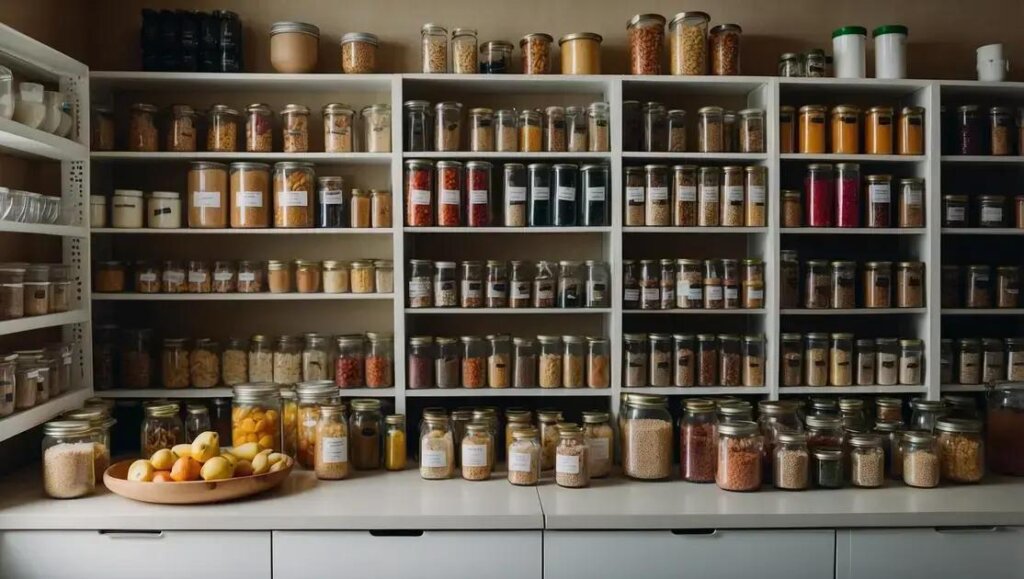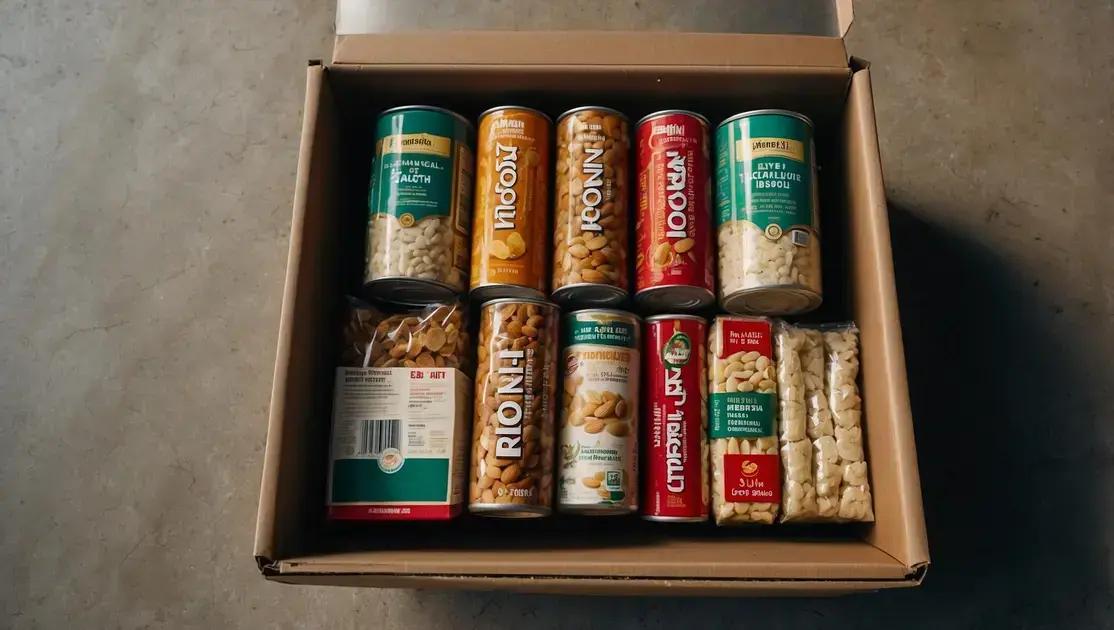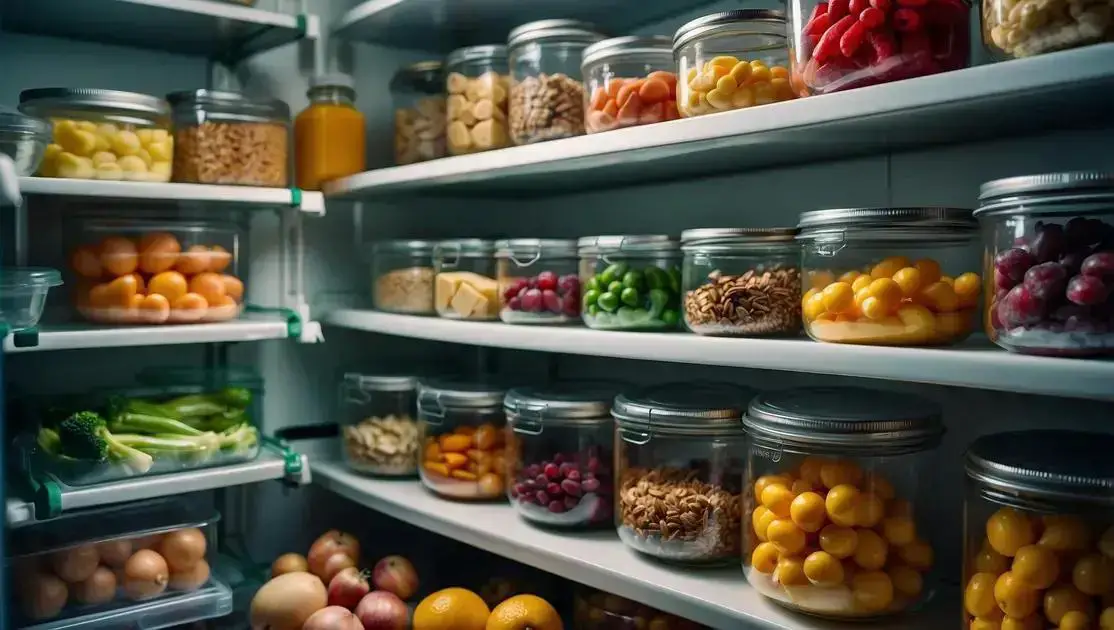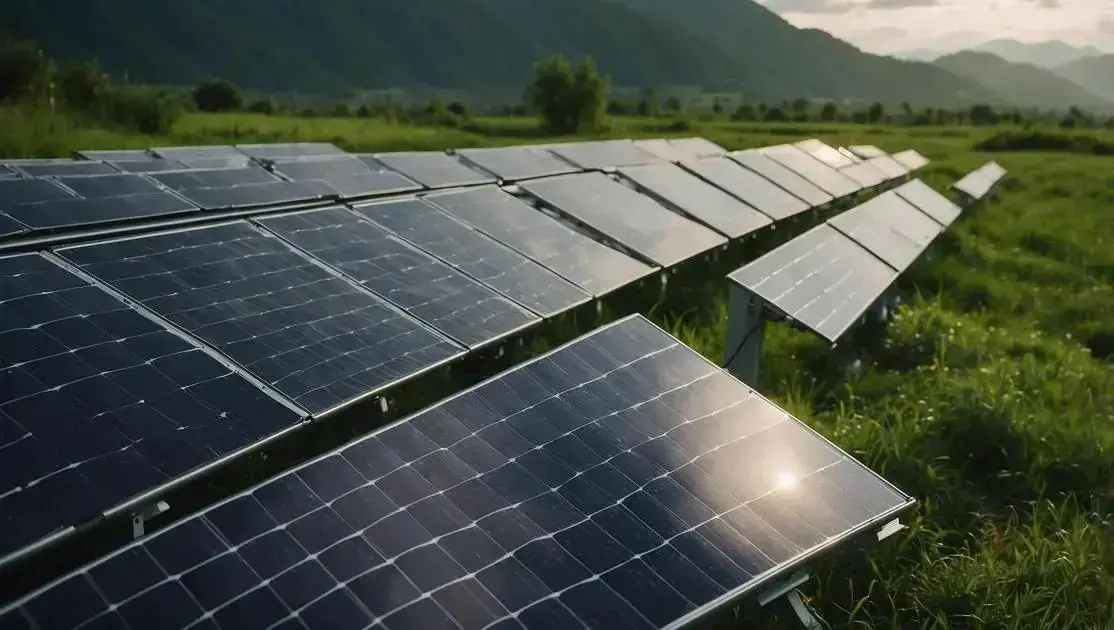Non-perishables are essential items that every household should consider when preparing for emergencies. They provide convenience and reliability, ensuring that you have something to eat when fresh items are unavailable. In this article, we will delve into what non-perishables are, their importance, and how to effectively stock your pantry with the best options.
Table of Contents
ToggleWhat Are Non-Perishables?
Non-perishables are foods that do not spoil or decay quickly, making them essential for long-term storage. These items can stay safe to eat for months or even years, making them perfect for emergencies or times when fresh food is not available. Common examples include canned goods, dry grains, pasta, and freeze-dried fruits.
Why Choose Non-Perishables?
One of the main benefits of non-perishables is convenience. They are easy to store and typically require no refrigeration. This makes them ideal for long blackouts or when access to fresh food is limited. Additionally, having a well-stocked pantry of non-perishable foods can save you money and reduce food waste.
How They Are Packaged
Non-perishable foods often come in packaged forms that make them easy to transport and store. For instance, canned foods are sealed to prevent air from getting in, which helps them last longer. Some products are vacuum sealed, while others are packaged in airtight bags.
Examples of Non-Perishable Foods
Excellent examples of non-perishables include:
- Canned vegetables and fruits
- Pasta and rice
- Dried beans and legumes
- Peanut butter and other nut butters
- Granola bars and protein bars
- Instant oatmeal and cereals
This variety ensures that you can create balanced meals even in emergencies.
Benefits of Non-Perishable Foods
Non-perishable foods come with many benefits that make them a smart choice for your pantry. One of the biggest advantages is their long shelf life. Unlike fresh foods, non-perishables can remain safe to eat for months or even years, which is especially crucial during extended blackouts or emergencies.
Cost-Effectiveness
Non-perishable foods are often more affordable than fresh options. Buying them in bulk can help you save money while ensuring you have enough food for tough times. Stocking your pantry with these items can also reduce the number of trips you need to make to the store.
Food Waste Reduction
Because they last for a long time, non-perishables help reduce food waste. Fresh food can spoil quickly, but with non-perishables, you can use what you need when you need it without the worry of it going bad.
Convenience
Non-perishable items are easy to prepare, making meal prep hassle-free. Many require little to no cooking, so they are great for quick meals. Just open a can or boil some pasta, and you are ready to eat!
Variety of Options
There is a wide range of non-perishable foods available. This variety ensures you can create balanced meals that include grains, proteins, and vegetables. Having different options also helps you avoid getting bored with your meals.
Nutrition Availability
Many non-perishable foods are nutritionally rich and can support your health. Foods like canned beans, nuts, and whole grains are packed with protein, fiber, and healthy fats, making them great choices.
Best Non-Perishables for Emergency Kits
When preparing for emergencies, having the right non-perishable foods in your emergency kit is crucial. These foods should be nutritious, easy to prepare, and have a long shelf life. Here are some of the best non-perishables you should include:
Canned Vegetables and Fruits
Canned vegetables and fruits are packed with essential vitamins and minerals. They are easy to add to meals and can be eaten raw or cooked. Look for varieties without added sugars or sodium for a healthier option.
Rice and Pasta
Rice and pasta are versatile staples that can serve as a great base for many meals. They are easy to store and cook quickly. Choose brown rice or whole-grain pasta for extra fiber and nutrients.
Peanut Butter
Peanut butter is a protein-rich food that has a long shelf life. It provides healthy fats and energy, making it excellent for snacks or sandwiches. Look for natural versions with no added sugars.
Nut and Seed Bags
Nuts and seeds are nutrient-dense and packed with healthy fats. They can be eaten as a snack or added to recipes. Choose mixed nuts or single varieties such as almonds and sunflower seeds.
Instant Oatmeal
Instant oatmeal packets are a great breakfast option. They are quick to prepare with just hot water and can be flavored with fruits or nuts. Look for low-sugar options.
Canned Soups and Stews
Canned soups and stews can provide hearty meals during emergencies. They are easy to heat up and come in many varieties, including vegetarian options. Choose low-sodium options for a healthier choice.
Granola and Protein Bars
Granola and protein bars are convenient and portable snacks. They offer a quick source of energy and can be a good part of your emergency kit. Look for options high in fiber and protein.
Dried Fruits
Dried fruits like raisins, apricots, and cranberries are great sources of vitamins and minerals. They are easy to store and make a healthy snack. Just watch out for added sugars.
Canned Fish
Canned fish, such as tuna or salmon, are excellent sources of protein and omega-3 fatty acids. They can be eaten on their own, in salads, or as a sandwich filling.
Vegetable Oils
Having vegetable oil in your kit is essential for cooking. Olive oil and canola oil have long shelf lives and are healthy options. They can enhance the flavors of many dishes.
How to Store Non-Perishable Foods
Storing non-perishable foods properly is vital to ensure they maintain their quality and safety. Follow these guidelines for effective storage:
Choose a Cool, Dry Place
Non-perishable items should be stored in a cool, dry area away from direct sunlight. Heat and humidity can cause food to spoil faster. A pantry or cupboard is often ideal.
Use Airtight Containers
For items like grains, cereals, and snacks, use airtight containers. This protects them from moisture and pests. Glass jars or plastic bins with tight seals work well.
Label and Date
Always label your non-perishables with the purchase date. This helps you keep track of how long they have been stored. Use older items first to prevent waste.
Keep Items Organized
Organize your pantry by grouping similar items together. Place canned goods, grains, and snacks on different shelves for easy access. Make sure to check your stock regularly.
Rotate Stock
Practice the “first in, first out” method (FIFO) to ensure older items are used before newer ones. This way, you minimize spoilage and maximize freshness.
Avoid the Floor
Never store non-perishable foods directly on the floor. This can expose them to moisture and pests. Use shelves or bins to keep them elevated.
Watch for Pests
Keep an eye out for signs of pests like ants or mice. If you notice any, take quick action to eliminate them. Storing food in sealed containers helps reduce the risk.
Check Expiration Dates
Regularly check the expiration or best-by dates on your non-perishable items. Discard anything that is expired or shows signs of spoilage.
Top 10 Non-Perishable Items to Always Have
Having essential non-perishable items in your pantry is crucial for preparing for emergencies or simply to ensure you have food on hand. Here are the top 10 non-perishables that you should always have:
1. Canned Beans
Canned beans are a great source of protein and fiber. They are versatile and can be added to salads, soups, or eaten on their own.
2. Rice
Rice is a filling staple that has a long shelf life. It serves as a base for many meals and is easy to prepare.
3. Canned Vegetables
Canned vegetables provide important nutrients and are convenient for cooking. Choose low-sodium options for a healthier choice.
4. Peanut Butter
Peanut butter is packed with protein and healthy fats. It can be used in sandwiches, smoothies, or just eaten with a spoon for a quick snack.
5. Pasta
Pasta has a long shelf life and can be cooked quickly in various ways. It’s perfect for making hearty meals.
6. Tinned Fish
Tinned fish like tuna or salmon is an excellent source of protein and omega-3 fatty acids. It’s great for salads or sandwiches.
7. Dried Fruits
Dried fruits like raisins, apricots, or cranberries are nutritious snacks that are high in vitamins. They make an excellent addition to breakfast or trail mix.
8. Instant Oatmeal
Instant oatmeal is a quick and healthy breakfast option. It requires only hot water and can be flavored with fruits or spices.
9. Granola Bars
Granola bars are convenient snacks that are easy to carry. They offer quick energy and come in various flavors.
10. Vegetable Oils
Having vegetable oil on hand is important for cooking. Oils like olive or canola are versatile and can enhance the flavor of your meals.
Understanding Expiration Dates on Non-Perishables
Understanding expiration dates on non-perishables is important to ensure food safety and quality. Here are the key points to keep in mind:
Types of Labels
Non-perishable foods often come with different types of labels. The most common are:
- Best By: This date indicates when the product will have the best flavor and quality. It is not a safety date.
- Use By: This date is for safety. Foods should be consumed by this date for health reasons.
- Sell By: This date tells the store how long to display the product. It doesn’t indicate the end of the product’s quality.
What Do Expiration Dates Mean?
Expiration dates determine the freshness and quality of food. After these dates, food may still be safe to eat, but its taste and texture could change. Always check for signs of spoilage, such as off smells or discoloration.
Proper Storage Extends Shelf Life
Storing non-perishables correctly can extend their shelf life. Keep them in a cool, dry place and sealed properly. This minimizes the impact of heat and humidity on the food.
Regularly Check and Rotate Stock
Make it a habit to regularly check your pantry for expiration dates. Use the first-in, first-out (FIFO) rule. This means using the older items before newer ones to help reduce waste.
Visual and Sensory Checks
Even if a food item is past its expiration date, it might still be safe. Perform visual and sensory checks, such as looking for mold or checking the smell. If it seems off, it’s better to throw it away.
Creative Recipes with Non-Perishables
Using non-perishables creatively in your cooking can turn empty pantry items into delicious meals. Here are some easy and tasty recipes to try:
Canned Bean Chili
Combine assorted canned beans, a can of diced tomatoes, and some spices like chili powder, cumin, and salt in a pot. Simmer for 20 minutes and serve hot. You can add corn and grated cheese if desired.
Pasta with Tomato Sauce
Cook your favorite dried pasta according to the package instructions. In a separate pan, heat a can of tomato sauce and add garlic powder, Italian herbs, and a pinch of sugar for balance. Mix the sauce with the drained pasta and serve.
Peanut Butter Banana Oatmeal
Prepare instant oatmeal as per the package directions. Once cooked, stir in a tablespoon of peanut butter and top with sliced bananas or any dried fruit you have on hand.
Tuna Salad Wraps
Mix a can of tuna with a spoonful of mayonnaise, diced canned pickles, and mustard. Spread the mixture on tortillas and add your favorite greens or any canned veggies. Roll them up and enjoy!
Dried Fruit Trail Mix
Combine various dried fruits (like apricots, cranberries, and raisins) with nuts and seeds in a bowl. This makes for a great snack or quick breakfast option packed with energy.
Vegetable Fried Rice
Use leftover rice from a previous meal. In a skillet, add oil, then toss in canned mixed veggies and cooked rice. Season with soy sauce and stir-fry until heated through.
Granola Bar Bites
Mix oats, peanut butter, honey, and any dried fruit or nuts you like. Press the mixture into a pan, refrigerate until set, and cut into squares for healthy snacks.
Instant Mac and Cheese
Prepare instant mac and cheese according to package instructions. Add in canned vegetables like peas or carrots for added nutrients.
Canned Fruit Parfait
Layer canned fruit with yogurt and granola in a glass. This makes for a refreshing dessert or breakfast option.
Curry Chickpeas
In a pan, heat canned chickpeas with coconut milk and curry powder. Simmer for about 10 minutes and serve over rice or with tortillas.
Non-Perishables vs. Perishables: Key Differences
Understanding the differences between non-perishables and perishables is essential for effective food storage and meal planning. Here are the key distinctions:
Shelf Life
Non-perishables have a long shelf life, often lasting months or years without spoiling. Common examples include canned foods, dry pasta, and rice. Perishables, on the other hand, have a short shelf life and can spoil quickly. Foods like fruits, vegetables, dairy, and meat typically last only a few days or weeks.
Storage Requirements
Non-perishables can be stored at room temperature in a cool, dry place, making them easy to manage. Perishables require refrigeration or freezing to prevent spoilage, which can complicate storage, especially during power outages.
Preparation and Use
Many non-perishable foods are ready to eat or require minimal cooking. For instance, canned beans can be added directly to dishes after a quick rinse. Perishables generally require cooking or can be eaten raw, but they need to be consumed quickly to avoid waste.
Nutritional Value
While both non-perishables and perishables offer nutritional benefits, perishables often contain more vitamins and minerals, especially fresh fruits and vegetables. However, some non-perishables, like whole grains and legumes, can also provide essential nutrients.
Cost Considerations
Non-perishable foods are often less expensive in bulk and can save money over time. Perishables might have higher upfront costs, and if not consumed quickly, they can lead to waste.
Usage in Cooking
Non-perishables are ideal for creating quick meals and snacks, making them a handy option during emergencies or blackouts. Perishables are great for fresh meals and can add variety to your diet but require more planning to avoid spoilage.
Budgeting for Non-Perishable Groceries
Budgeting for non-perishable groceries can help you save money while ensuring you have enough food stocked up for emergencies. Here are some helpful tips:
1. Create a Grocery List
Before shopping, make a list of the non-perishable items you need. Include essentials like canned goods, pasta, rice, and snacks. Stick to this list to avoid impulse buys.
2. Compare Prices
Check prices at different stores, both in-store and online. Use apps or websites that compare prices to find the best deals on non-perishable items. This helps ensure you get the most value for your money.
3. Buy in Bulk
Purchasing non-perishables in bulk can save you money in the long run. Look for sales on bulk items or warehouses that offer discounts for larger quantities. Make sure you have space to store these items.
4. Plan Your Meals
Consider planning meals that use non-perishable items. This helps you buy only what you need and reduces waste. Look for recipes that can utilize your pantry staples.
5. Use Coupons and Discounts
Keep an eye out for coupons and special promotions on non-perishable foods. Utilizing these discounts can lead to significant savings on your grocery bills.
6. Track Your Spending
Maintain a budget by tracking your grocery expenses each month. Record your purchases and adjust your shopping habits as needed to stay within your budget.
7. Consider Store Brands
Store brands often provide the same quality as national brands but at a lower price. Choose store brand non-perishables to help stretch your dollar further.
8. Avoid Wasting Food
Wasting food is like wasting money. Store your non-perishables properly and rotate stock to use older items first. Regularly check expiration dates and plan meals around nearing expiration items.
Tips for Buying Non-Perishable Foods
Buying non-perishable foods wisely can make a big difference in your pantry and budget. Here are some practical tips to keep in mind:
1. Check for Quality
Always inspect the packaging for any signs of damage or bulging. If the packaging is compromised, the food may not be safe to eat.
2. Read Labels Carefully
Pay attention to the ingredients and nutrition facts on the labels. Look for items with fewer artificial ingredients and lower sodium levels for healthier choices.
3. Consider the Serving Size
Check the serving size of the product to ensure you understand how much you are getting. This helps you gauge how many servings you might need for your household.
4. Buy from Reputable Brands
Choose well-known brands that you trust. These brands often have quality control measures in place to ensure safe and tasty products.
5. Look for Sales and Discounts
Keep an eye out for sales, discounts, and promotions to save money on your purchases. Buying on sale can help you stock up on items you frequently use.
6. Utilize Bulk Purchasing
Consider buying non-perishables in bulk for significant savings, especially if it’s a staple item. Just make sure you have enough storage space.
7. Know Your Needs
Only buy what you know you will use. Avoid purchasing items that may end up being wasted. Plan meals around pantry staples to ensure you use them up.
8. Be Mindful of Expiration Dates
Look for products with longer shelf lives, and be mindful of expiration dates. Use the first-in, first-out (FIFO) method to keep your pantry items fresh.
9. Diversify Your Selections
Include a variety of non-perishable foods in your shopping cart, such as canned vegetables, grains, and snacks, to maintain a balanced diet.
10. Make a Shopping List
Before going to the store, make a list of what to buy. This helps you stay focused and avoid unnecessary purchases.
In Summary: The Importance of Non-Perishable Foods
Non-perishable foods are essential for ensuring you have reliable meal options during emergencies or blackouts. They offer the convenience of long shelf life, easy storage, and minimal preparation.
By understanding how to select, store, and incorporate non-perishables into your meals, you can maintain a well-stocked pantry that supports your nutritional needs. This can lead to cost savings and reduced food waste, making your meal planning more efficient.
Remember to budget wisely when purchasing these items, look for quality products, and make informed choices based on the advice provided in this guide.
With the right strategies, you can effectively utilize non-perishable foods to enhance your kitchen’s preparedness and creativity.
FAQ – Frequently Asked Questions about Non-Perishable Foods
What are non-perishable foods?
Non-perishable foods are items that have a long shelf life and do not spoil quickly. Common examples include canned goods, pasta, rice, and dried fruits.
How should I store non-perishable foods?
Store non-perishable foods in a cool, dry place, preferably in airtight containers. This prevents exposure to moisture and pests.
What are the benefits of buying non-perishable foods?
Non-perishable foods are convenient, require less frequent shopping, and can save money when bought in bulk. They also help reduce food waste.
How can I ensure that I buy quality non-perishable foods?
Always check the packaging for damage, read the labels for ingredients and nutrition facts, and look for reputable brands along with expiration dates.
Are non-perishable foods healthy?
Many non-perishable foods can be healthy, like canned vegetables, beans, and whole grains. However, always check the nutrient content and added ingredients.
How can I plan meals using non-perishable foods?
Plan meals around staples like rice, pasta, beans, and canned proteins. Incorporate other shelf-stable items like spices and sauces for variety.














